Capitol Reef National
Park is in south-central Utah. It is 100 miles long but fairly
narrow. The park, established in 1971, preserves 241,904 acres (377.97
square miles) and is open all year, although May through September are
the most popular months.
Called "Wayne Wonderland" in the 1920s, Capitol
Reef National Park protects colorful canyons, ridges, buttes, and monoliths.
Capitol Reef is the name of an especially rugged and spectacular
segment of the Waterpocket Fold near the Fremont River. The area was
named for a line of white domes and cliffs of Navajo Sandstone.
Easy road access came with the construction in 1962 of State Route
24 through the Fremont River Canyon. |
Below: photos taken near the Visitor
Center. |
|
|
Below: A big
rock with a hole in the top - located outside the Visitor Center at
Capitol Reef National Park. |
|
The long but relatively narrow formation below was uplifted approximately
6,800 feet higher on the west side. It is named the Waterpocket
Fold because of the numerous small potholes, tanks, or pockets
that hold rainwater and snowmelt.
The Waterpocket Fold has been beset by erosion since its
creation. Erosion includes weathering, the transportation of material,
chemical wearing, and the effects of gravity. Frost, plant roots, internal
water seepage, and flash floods have all played a part in the drama
of Capitol Reef. Deposition, uplift, and erosion are the major geologic
processes which created this landscape.
At most viewpoints in Capitol Reef National Park, each side of the
narrow street is completely different. |
|
|
Below: Lee Duquette was dwarfed by the
size of the formations. |
|
|
|
|
Below: Tower and rock layers at Capitol
Reef National Park |
|
|
|
|
|
|
|
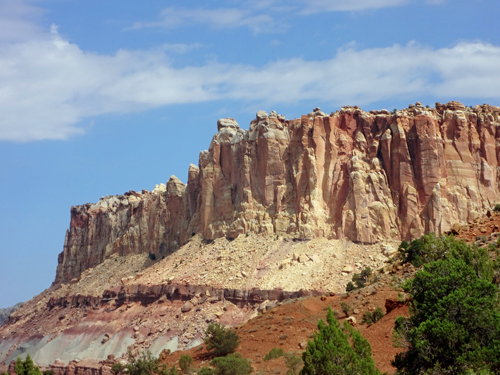
|
|
|
Below: Slick Rock Divide |
|
|
|
|
 |
Below: Old Wagon Trail |
|
|
|
|
|
|
|
|
|
|
|
|
|
|
|
|
|
|
|
|
|
|
|
|
|
|
|
|
Below: Lee Duquette saw a big boulder (below photo on the right) and
said the white horizontal stripes were glistening in the sunshine. |
|
|
|
|
Below: Grand Wash |
|
|
|
|
|
|
|
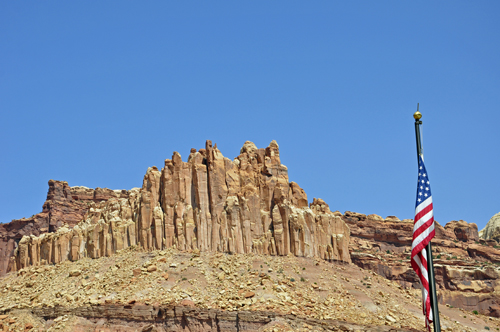
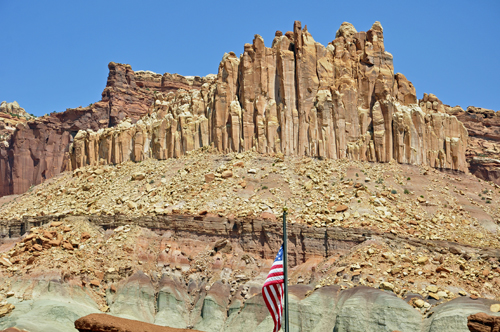
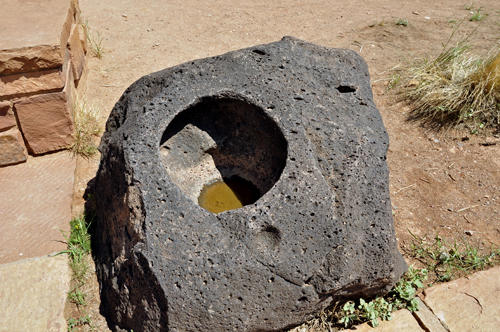
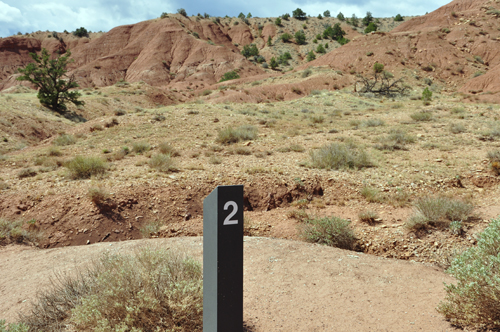
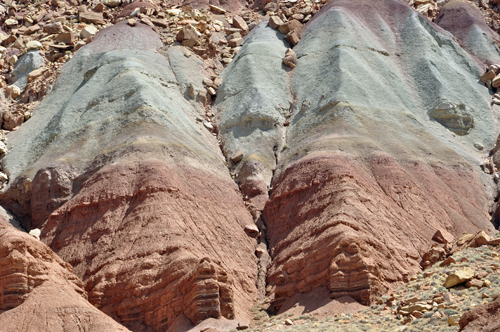
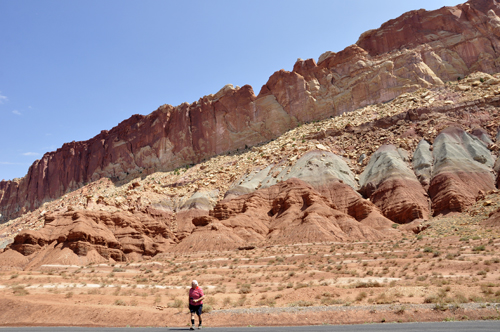
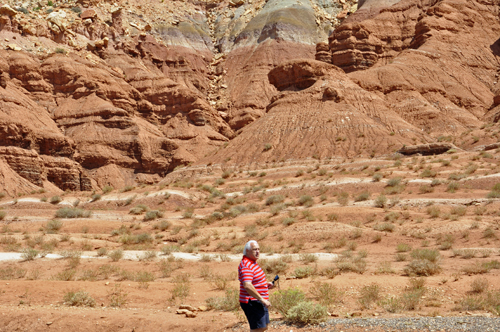


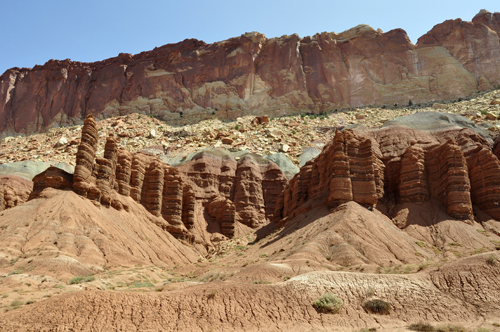
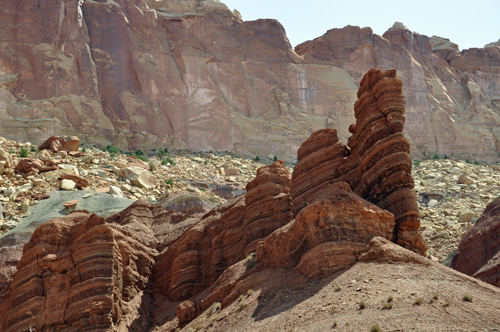
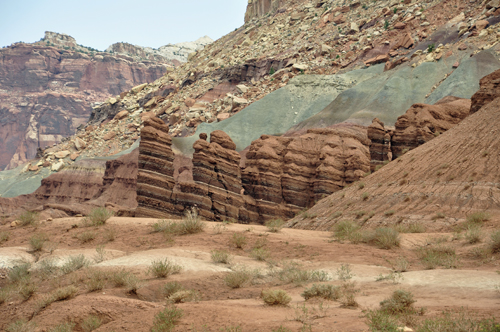
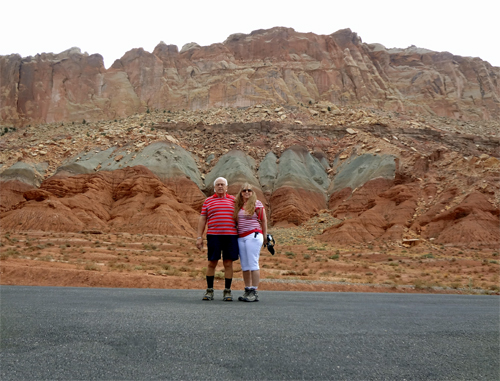

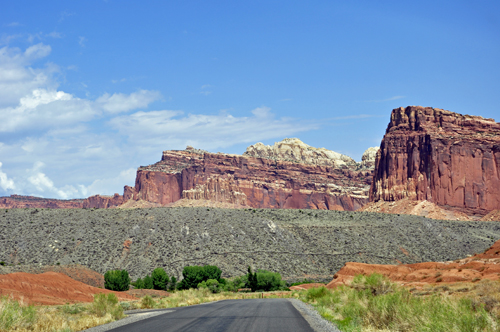
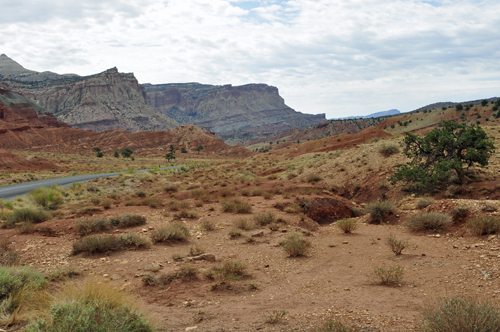
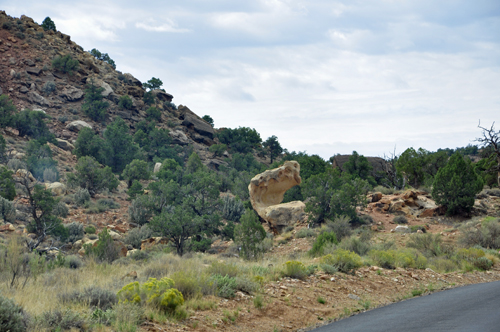

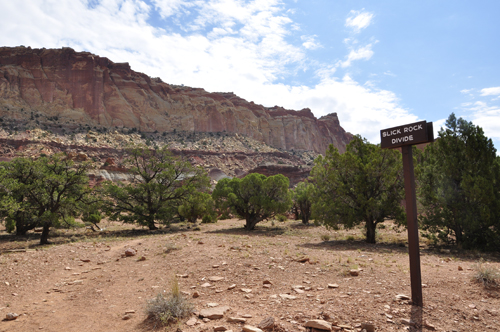
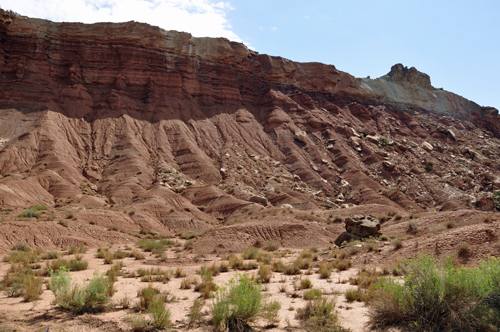




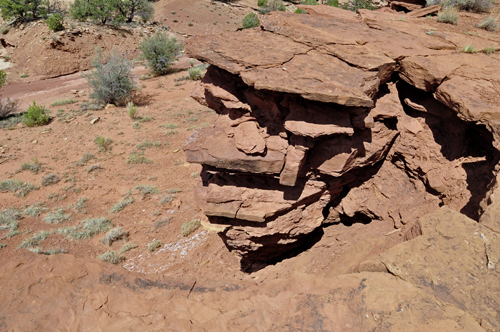

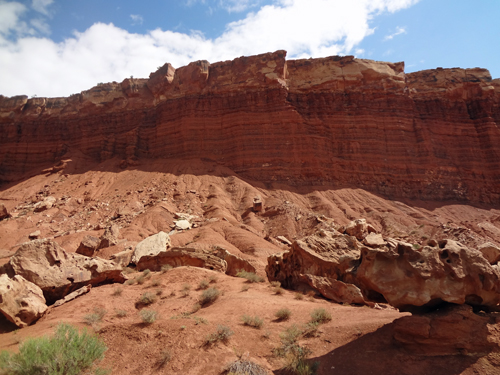
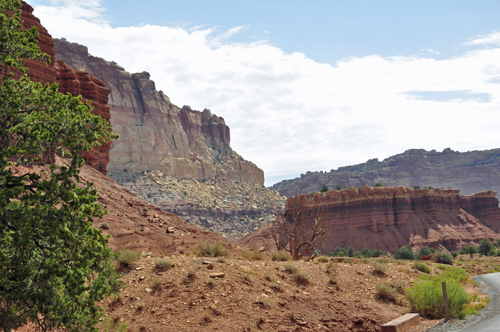
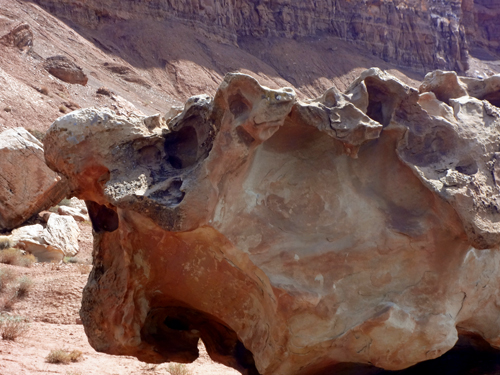
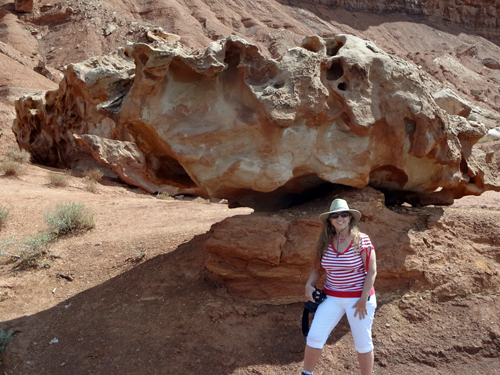
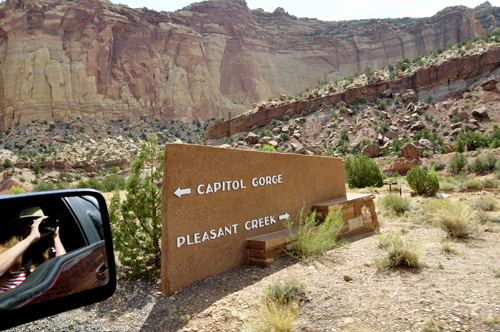
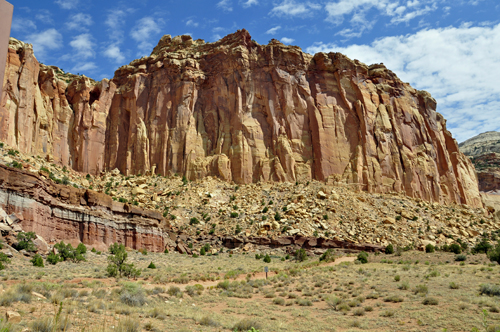

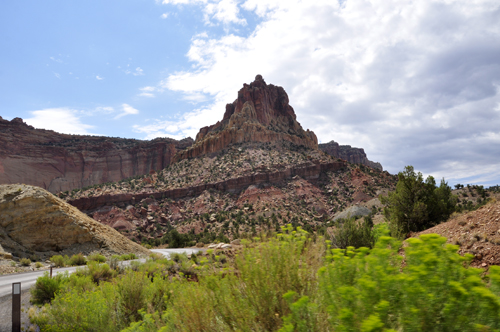
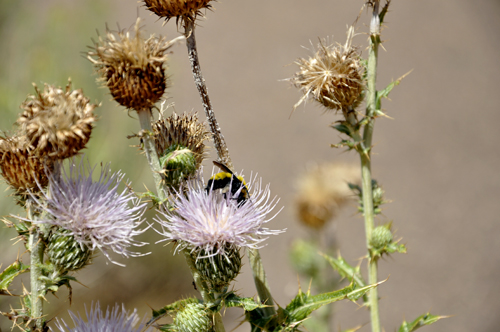
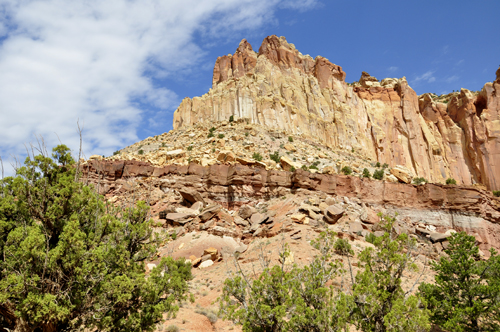
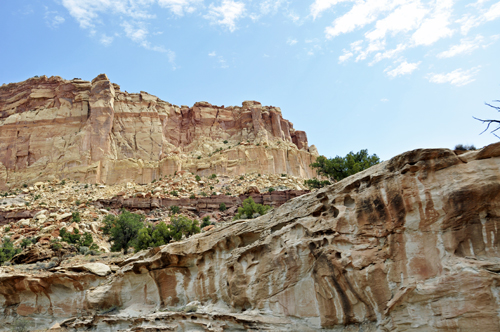
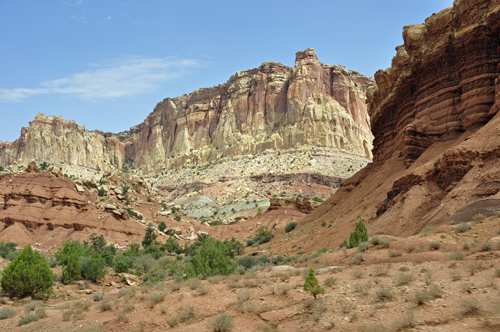
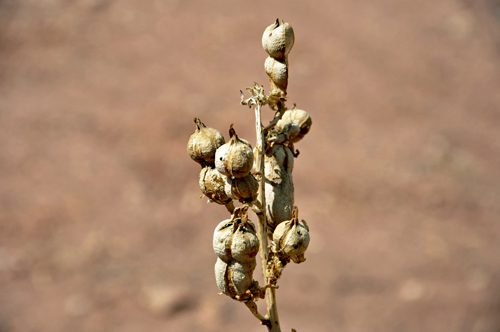
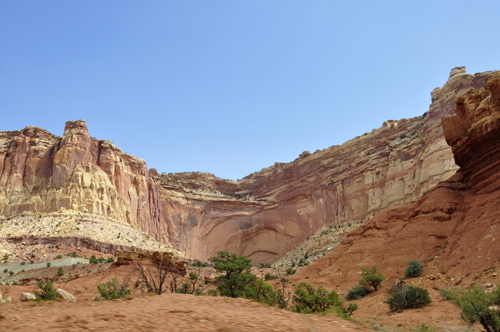
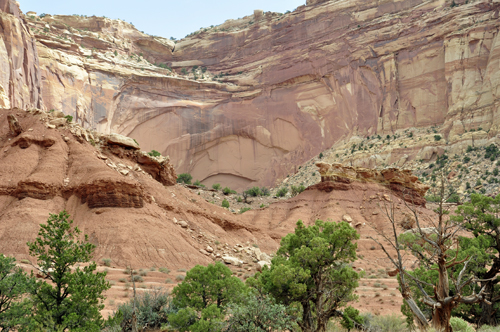
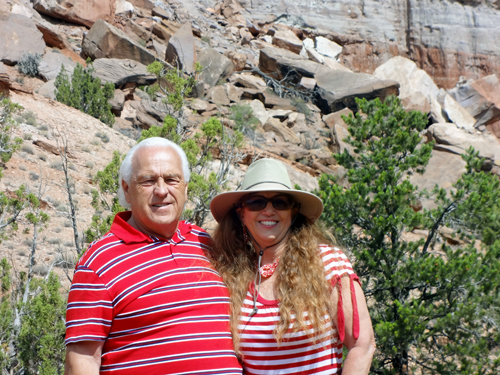
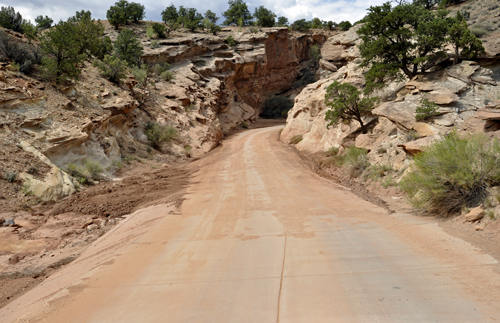
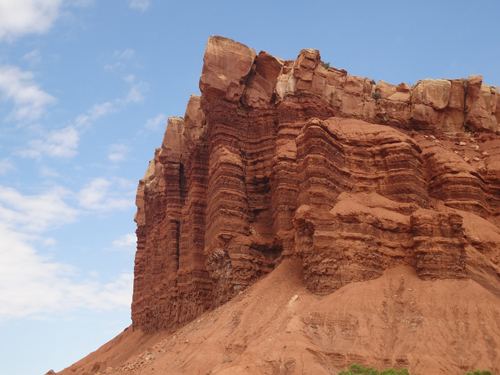
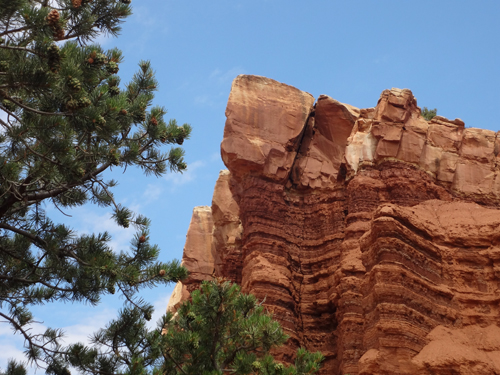
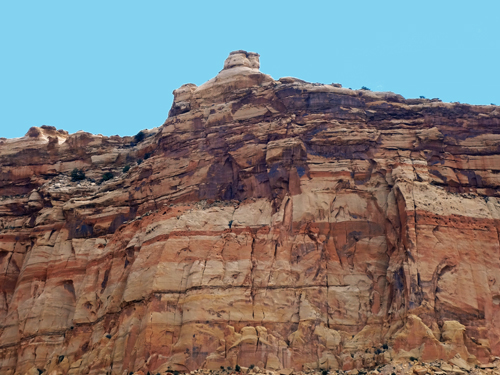
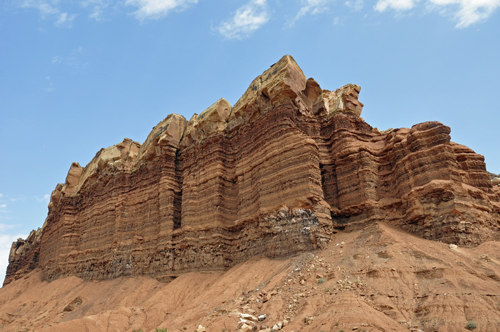
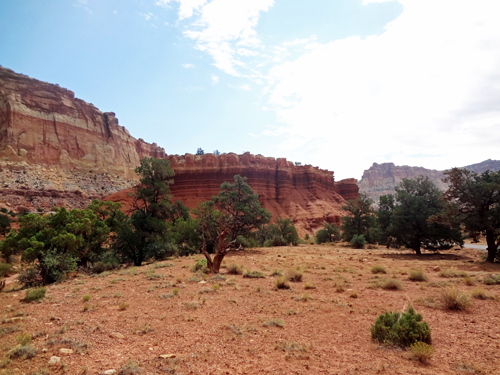
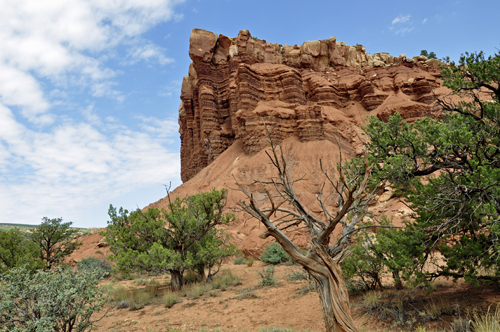
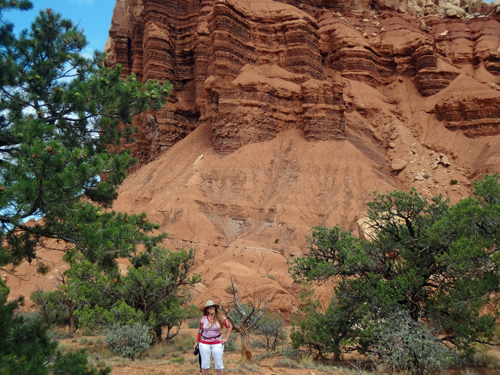

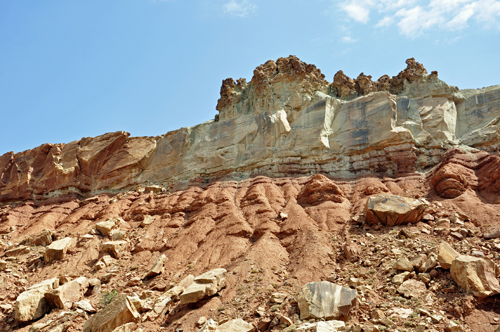
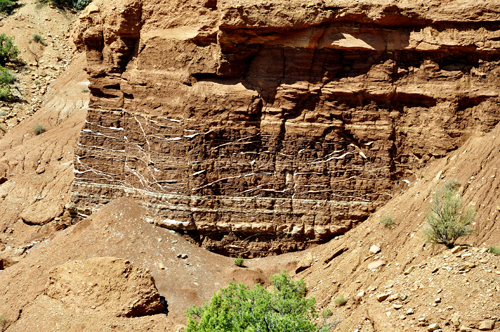
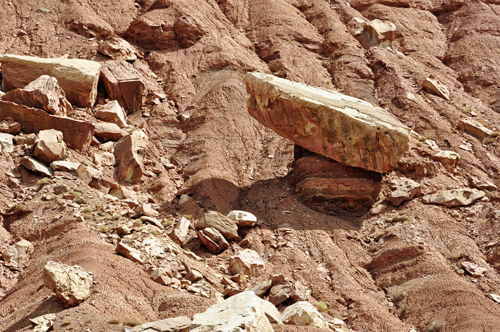
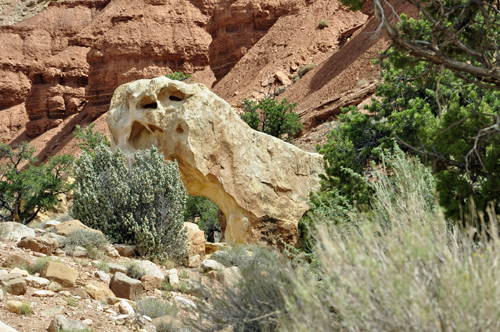
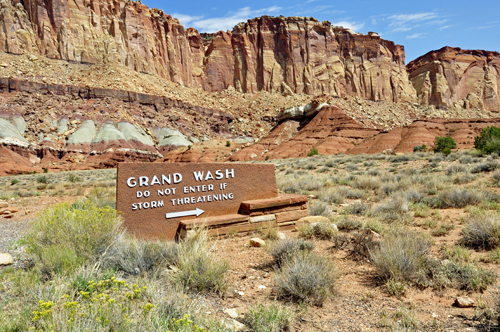
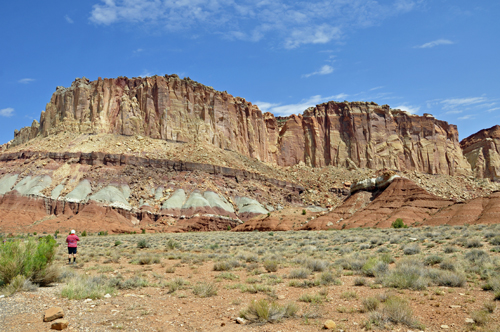

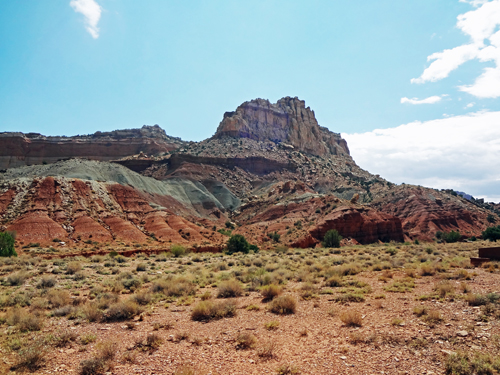
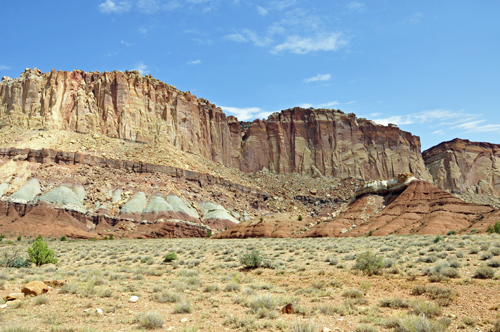
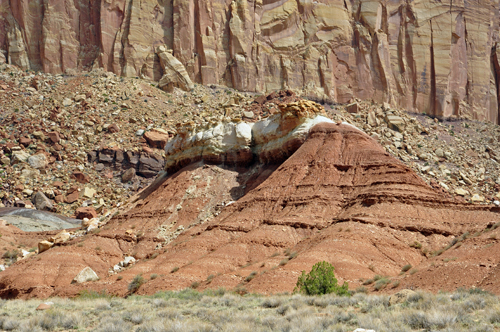
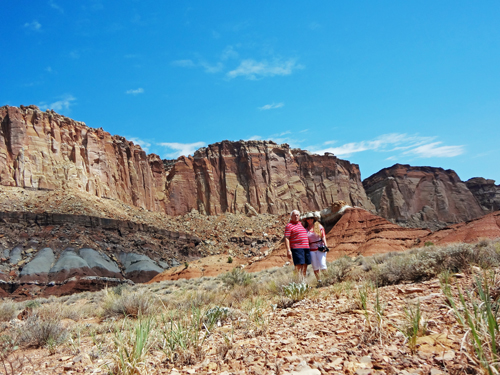

 Capitol Reef National Park
Capitol Reef National Park  Please continue on for
Please continue on for